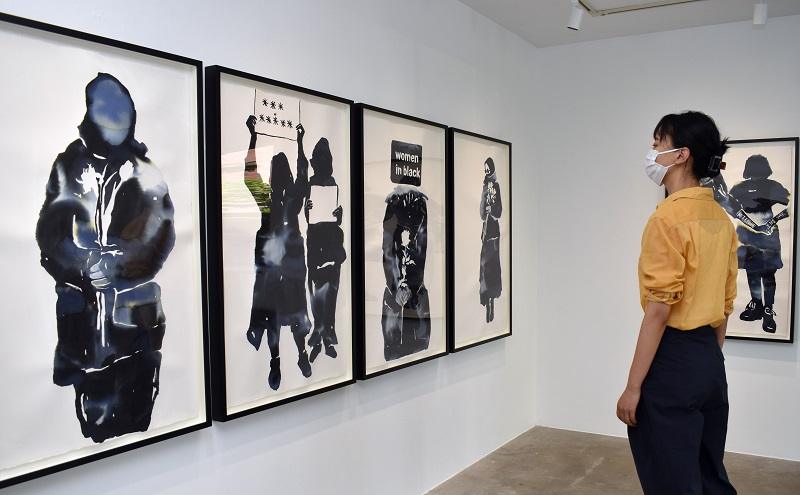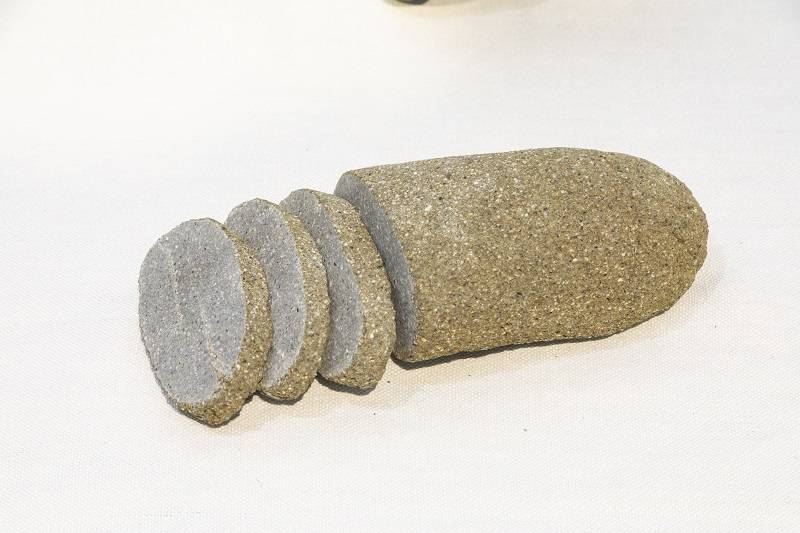Russian, Ukrainian artists seek to help war-torn Ukraine through exhibitions in Japan

Ekaterina Muromtseva’s “Women in Black” series is exhibited at Art Front Gallery in Shibuya Ward, Tokyo.
14:30 JST, August 22, 2022
Two artists from Russia and Ukraine are holding exhibitions in Japan to raise money for Ukraine and express their wish for peace through works created after Russia’s invasion.
The solo exhibition “Breaking History” by Russian artist Ekaterina Muromtseva is being held at Art Front Gallery in Shibuya Ward, Tokyo, through Aug. 28.
In a series of seven watercolors collectively titled “Women in Black,” Muromtseva depicts quiet protests by Russian women dressed in black and carrying white flowers.
“Anti-war protests in Russia are not that visible from the outside, because all mass demonstrations are violently suppressed,” Muromtseva, 32, is quoted as saying on the gallery’s website. She was born in Moscow and now studies in the United States.
“I created these works to share my belief that it is possible to raise your voice against injustice under any kind of pressure,” Muromtseva said.
Ukrainian artist Zhanna Kadyrova’s series “Palianytsia,” fashioned out of stone, is being exhibited through Nov. 13 at Museum on Echigo-Tsumari in Tokamachi City, Niigata Prefecture.

Zhanna Kadyrova’s “Palianytsia” in Museum on Echigo-Tsumari in Tokamachi City, Niigata Prefecture
According to the museum’s website, palianytsia is a type of bread roll popular in Ukraine, and the word is often used to identify Russian scouts, as it’s difficult for non-Ukrainians to pronounce.
Kadyrova, 41, creates her work in the west of her home country, which is relatively safer.
Muromtseva and Kadyrova have shown their work in Japan before, in exhibitions organized by Japanese art director Fram Kitagawa.
The two artists wished to support Ukrainians through their latest shows, and Kitagawa and other supporters moved swiftly to help. Due to her clear anti-war stance, it would have been difficult and dangerous for Muromtseva to hold her exhibition in Russia, and Kadyrova struggled to continue her work as an artist in a country ravaged by war.
“I hope many people come to see these works, which illustrate the current global situation,” said Waseda Univ. Prof. Wakana Kono, who specializes in the culture and contemporary art of Russia and Eastern Europe and is a supporter of Muromtseva and Kadyrova’s exhibitions.
“They show human connections that transcend national borders through art,” Kono said.



